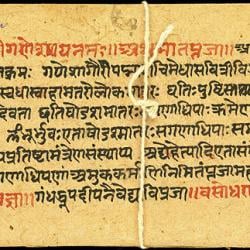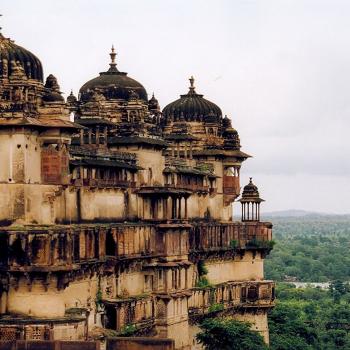Telang Swami: Ramakrishna referred to him as the “Walking Shiva of Varanasi”. Left his body in 1887, after living over 200-300 years. He weighed about 300 pounds though he ate very little. He never wore clothing except for a rudraksh mala. He performed a ritual bath of Kashi Vishveshvara with his own urine and feces. When he did this, one of the temple priests was so outraged that he slapped Telang Swami, who didn’t bother about it and merely went off.
That night the King of Benares saw Kashi Vishveshvara in a dream. The god told him, “Telang Swami is my very essence; how dare anyone insult him?” The next day the King tried to locate the priest to punish him, but learned he had died suddenly during the night.
Tulsidas: Lived most of his life in Varanasi. Tulsi ghat is named after him. He wrote the Ramcharitmanas, the Ramayana in a vernacular dialect known as Awadhi. He is considered one of the greatest poets in India. He is sometimes called the reincarnation of Valmiki. He began the tradition of Ramlila plays.
Some stories about Tulsidas say that he was married. Other stories say that he wasn’t. In the stories that say he was married, it is said that he was very infatuated with his wife. Once, she went across the river to her father’s place without informing Tulsidas. When he came to know about it at night, he left for his father-in-law’s place immediately.
He left in the middle of a storm, crossed the swollen torrent of the river and arrived at his father-in-law’s place. His wife, on seeing his efforts commented: “If you put as much emotion into worshipping Lord Ram as you have in longing for me, think of what heights you would have reached by now.” He immediately left his home and became a sadhu.
Tulsidas left his body at the Assi Ghat.
Kabir: He lived all his life in Kashi, but chose to die in a nearby place called Maghar. It was said in tradition that if one died in Kashi, he would go to heaven. If he died in Maghar, he would go to hell.
A few Kabir dohas are given below with translation.
1) Kya Kashi kya oosar maghar, Ram hriday bas mora,
Jo Kashi tan tajai kabira, Ramahin kaun nihora?
Translation: What’s Kashi and what’s the barren Maghar to me, when Rama lives in my heart.
If Kabir needs Kashi to leave his body, then how is he in Rama’s grace?
2) Kabira khayi kota ki, pani na pivai koi
Jaye mile jaba ganga men, gangodaka hoi
Translation: Kabir says, no one drinks water from the pool of water that surrounds a fort (dirtied water),
But when it mingles in the Ganga, it becomes Ganga Water.
3) Tirath vrat kari jag mua, jure pani nahaye
Ram nam jane bina, kal jugan jug khaye.
Translation: Doing pilgrimage, fasting and bathing, the world is dying,
Without knowing the name of Ram, the cycle of life and death continues.
A Story About Kashi: Shiva instructed Vishnu that Kashi perpetually remains in Satya Yuga. It is said that there are three powers that can never enter its precincts — Yama, Yamdut (messengers of Yama) and Kali Yuga. Those who die here are not taken by Yama but by Mahakala.
Shiva’s city thus takes on Shiva’s own characteristics as ‘conqueror of death’ (Mahamritunjay) and as only one of the gods who is truly indestructible (Avinashi) and who survives the dissolution of the cosmos.














